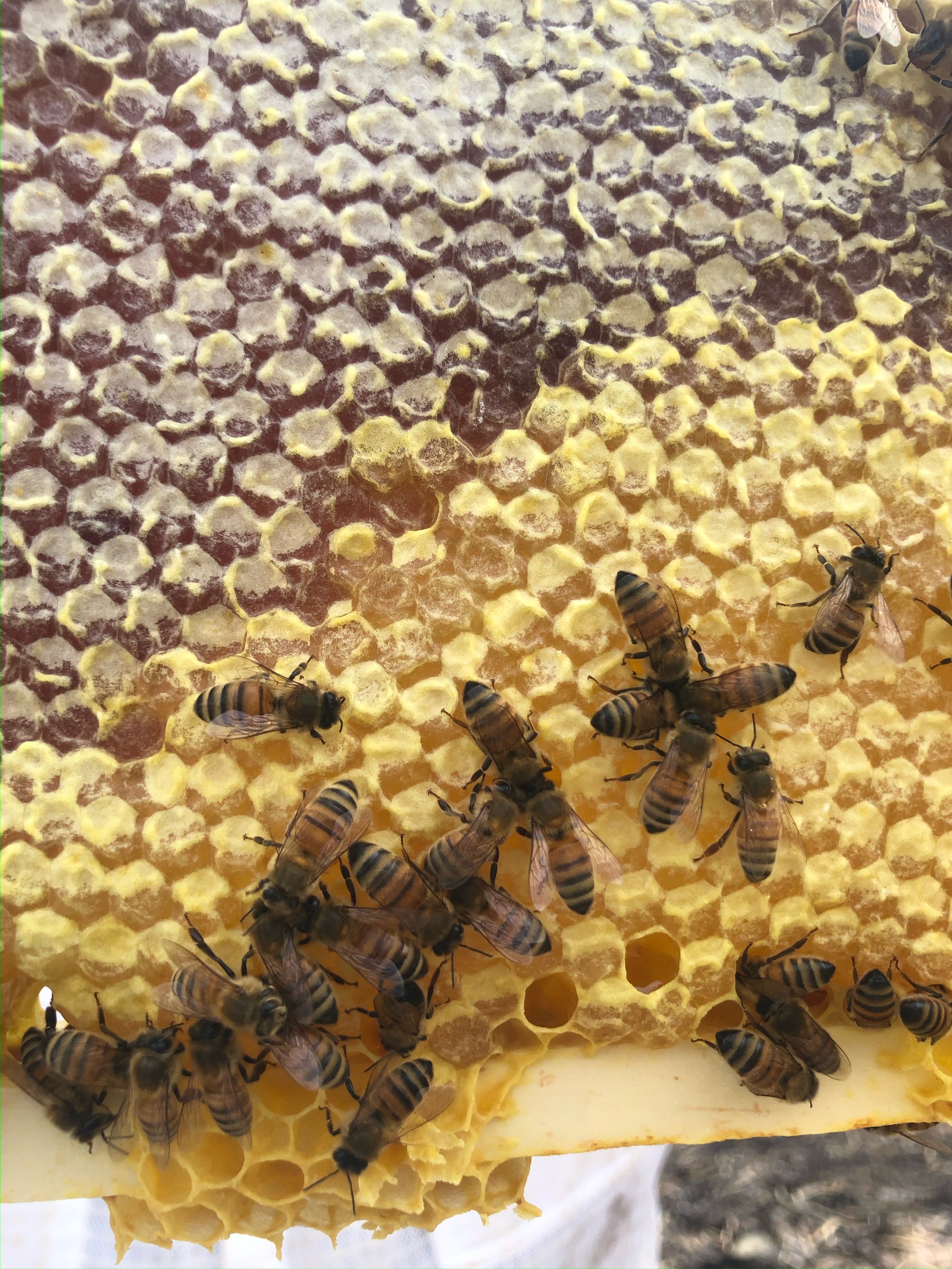
Resources
Apiary Registration is Required in New York State
Registering your hive ensures communication with NYS Department of Agriculture and Markets. All registered beekeepers will be kept aware of any to honey bee health issues. This is especially important for region-specific tracking of American Foulbrood.
If you have any questions relating to the Registration of apiaries, please contact Joan Mahoney, NYS Apiculturist, at the Albany office:
1 (800) 554-4501 or 1(518) 457-2087
Joan.Mahoney@agriculture.ny.gov
Take My Bees, PLEASE!
There’s a big ball of bees hanging out in my yard. What do I do?
What you’re seeing is probably a swarm of honey bees. Swarming is Nature’s way of increasing the number of honey bee colonies in the world. Swarms usually are seen in May or June. This year’s mild winter and warm spring has given local honey bees a leg up and so you may see swarms earlier or more often than in the past.
When airborne they seem huge but generally range in size from a football to a basketball. Some are much larger. Honey bee swarms are usually very docile, not having a home to defend. They are often observed in transit.
These migrating swarms are very desirable to beekeepers who like to collect swarms. Once they take up residence in a wall or chimney, they are much harder to deal with. Many beekeepers do not have the skill or inclination to tackle the removal of bees from such predicaments. Ultimately, if honey bees get into your walls, you may have to call an exterminator.
Bees, once on your property, belong to you and you can do with them what you see fit. They are not an endangered species, nor is it illegal to kill them it they become a nuisance. We hope you will give our beekeepers a chance to rescue them, however.
Please do not call beekeepers about hornets, wasps, bumble bees, carpenter bees, yellow jackets, termites or spiders. Honey bees are recognized by their small size and their downy appearance. Other insects may be similar in color. If you’re not sure, a web page like this can help you distinguish honey bees from hornets and wasps.
The most current list of beekeepers statewide, listed by county, who will remove swarms or do cutouts was initiated and compiled by Cornell’s Dyce Lab, and is current as of 2019. The link is: https://pollinator.cals.cornell.edu/resources/removing-your-swarms/
Where to Buy Bees?
Emma Walters, Cornell Honey Bee Extension Associate has sent us a directory produced by Cornell and Dyce Lab volunteer/FLBC Apiary Manager David Hopkins to help those who are looking to purchase bees identify and locate producers. You can access the directory on Cornell University’s Pollinator Network website here:https://pollinator.cals.cornell.edu/resources/general-beekeeping-resources/find-nuc-and-queen-producers-new-york-state/
If you sell bees near Ithaca, NY and you would like to be listed here, please email us with your information.
Bee Health
NY Bee Wellness
New York state resource for bee health and wellness.
Hive Inspections
Good notes can make a critical difference when evaluating your beekeeping skills, and keeping your apiary robust and productive. Here’s an easy-to-use inspection sheet (PDF), crafted by the Eastern Missouri Beekeepers, that you can print and use in your home apiaries. Thanks to Katie Lee and the Midwest Honey Bee Tech Transfer Team, www.beeinformed.org.
Treatment options for beekeepers
A Field Guide to Honey Bees and their Maladies
2013 Ontario Treatment Recommendations for Honey Bee Disease and Mite Control (Opens a PDF file)
Bee infectious diseases


